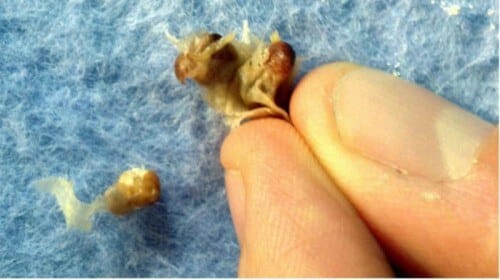Israeli students do experiments on the International Space Station

The termination of the flights of the American space shuttles about two years ago, and their replacement by private spacecrafts, opened new horizons for organizations that want to send experiments to the space station. After the successful flights of SpaceEx's "Dragon" spacecraft, this week it was Orbital's turn, which successfully completed the test flight of its "Cygnus" spacecraft (swan in Latin).
With the report of the successful docking, at the beginning of the week, not only in the United States they breathed a sigh of relief, but also in the "Atidim" schools in Holon and the "Mate Yehuda" school in Zur Hadassah. The success of the test flight paved the way for a commercial flight of the spacecraft, scheduled for next month, which should then include two science experiments by these middle school students. Tzur Hadassah students will test whether liquids that do not mix on Earth, such as oil and water, behave differently in the absence of gravity. This experiment requires careful planning: there is no problem mixing two substances in space, but how do you freeze their state to preserve the state from space even after returning to Earth, so that the experiment can be tested in the classroom? The solution: the young researchers replaced the water in the experiment with an epoxy substance, which initially behaves like water, and hardens after a few minutes. The astronauts on the space station will only be required to mix the two materials, and the students will be able to learn if oil and water mix in space: an experiment that is of great importance, for example for understanding the behavior of fuels under conditions of zero gravity.
The students from Holon - on the other hand - designed an experiment testing how the lack of gravity affects the formation of salt crystals. The educational experiments are managed by the NSL company, with the assistance of the Ilan Ramon Memorial Foundation, which participates in the funding that will be provided for the space. "Working with the space station and astronauts is not something that any of us encountered, certainly not when we were children," says NSL CEO Raz Yitzhaki-Tamir. "We are also creating a very powerful learning experience here, with research at the forefront of science. We do projects that also scientifically advance questions that we as humans do not know the answers to. The children participate at a very young age in a groundbreaking scientific thought process that follows them throughout their lives."
Radishes from another world
The experiment in space started about a year and a half ago, with two experiments flown in the Dragon spacecraft: one by the Meshgav school in the Western Galilee, and another experiment by the Atidim school, which found an effective method for germinating radish seeds in zero gravity conditions: the seeds were wrapped in a type of Absorbent paper, and the astronaut who performed the experiment broke a capsule containing water in the sperm cell. In the parallel control experiment done on Earth, the water vapor was absorbed by the paper, and the seeds rotted. In space, however, the water dispersed into a spray of tiny droplets mixed with air, and the seeds took root. In the next step, Atidim plans to repeat the experiment in a larger chamber, with lighting that will allow the seeds not only to take root, but also to grow leaves. "The plants are a source of food and oxygen. If one day we have to move into space, we know that the plants will contribute to us", says one of the participants in the seed experiment, Liz Arzi, currently a XNUMXth grade student at Atidim.
"I earned a lot. It's an experiment that not everyone gets to do. It is very special. There are those who think that science is boring, and we showed them that it can be something special." When asked if she sees her future in the field of space, Arzi says, "There is a good chance that I will work in this field. Maybe I'll even be an astronaut."
The students participating in the XNUMXth grade project plan the experiment themselves in such a way that it will be possible to send it to space in a relatively small package, will require as little work as possible from astronauts, and will be able to be saved to examine the results in the classroom after it is returned from space. At the same time, they are conducting an identical control experiment here on Earth. With such a start to a science career as early as seventh grade, in the future of these students even the sky is not the limit.

One response
From not for its own sake (the space station was financed with the help of stories about scientific developments that were in vain) came out for its own sake - the space station deals mainly with education and a little bit of engineering. All these experiments could be performed more easily in an unmanned spacecraft, but the educational gain is enormous.